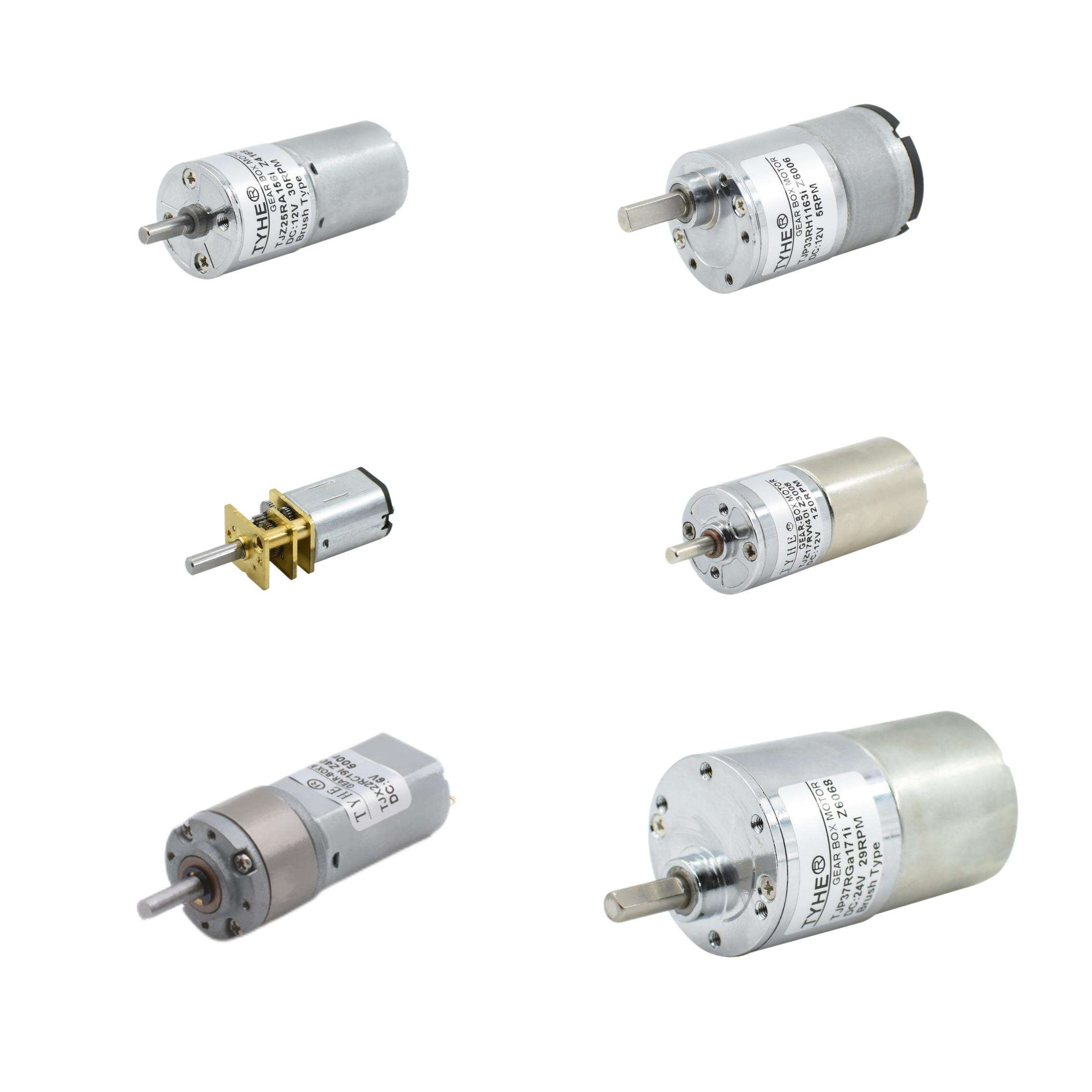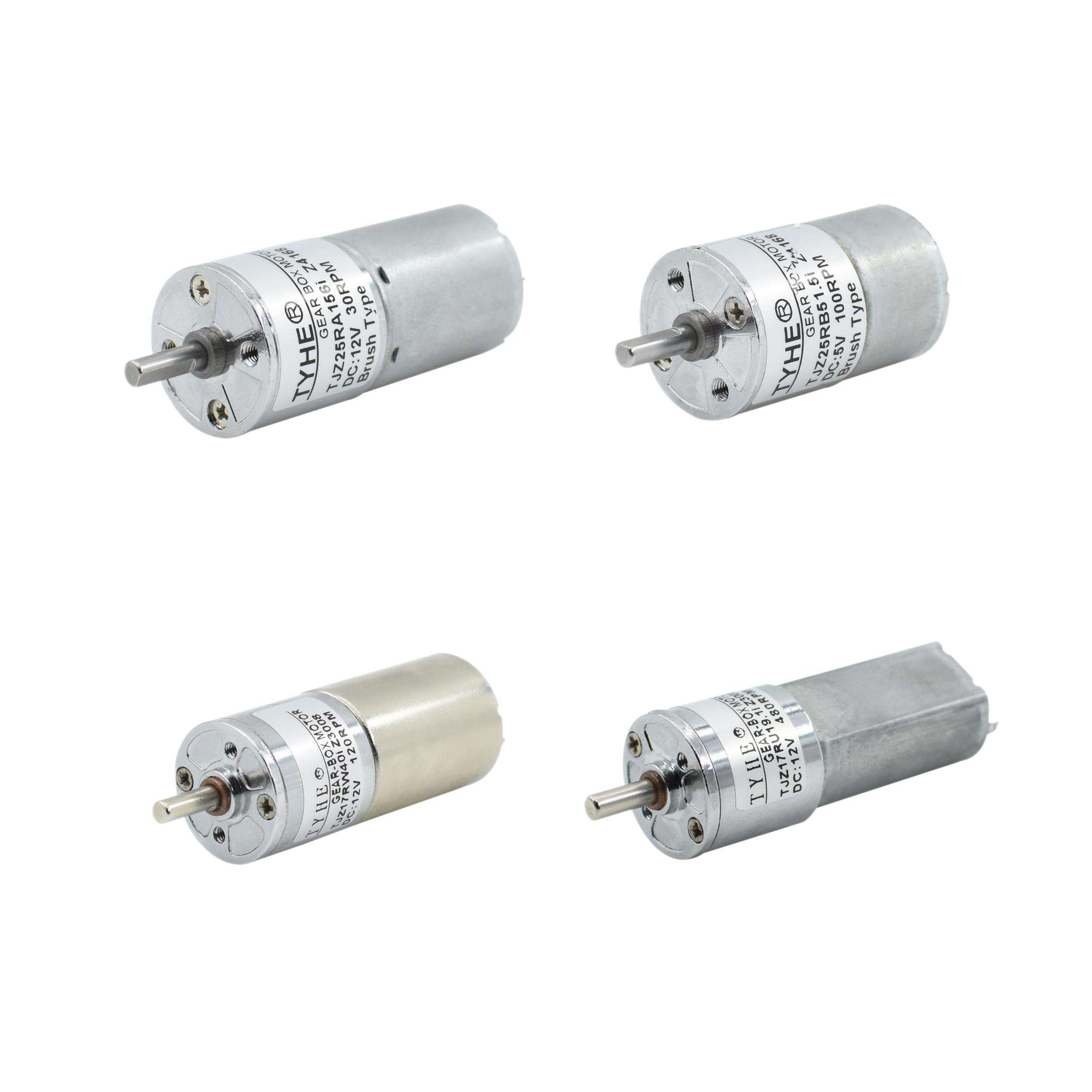Understanding the Evolution of Miniature Electric Motors
The landscape of small DC motors has transformed dramatically over the past decade, revolutionizing everything from consumer electronics to industrial automation. These compact powerhouses have become increasingly sophisticated, offering unprecedented levels of efficiency and precision for modern applications. As we look toward 2025, the small dc motor market continues to evolve with innovative technologies and enhanced capabilities.
Today's small dc motor solutions incorporate advanced materials and smart features that were unimaginable just a few years ago. With improved power-to-size ratios and enhanced durability, these motors are meeting the growing demands of miniaturization across various industries. Understanding the current state and future trajectory of this technology is crucial for making informed purchasing decisions.
Essential Specifications for Modern DC Motors
Power and Voltage Requirements
Selecting the right small dc motor begins with understanding power requirements. Modern applications typically demand motors ranging from 1.5V to 24V DC, with power outputs varying from a few watts to several hundred watts. The key is matching these specifications to your specific application needs while considering factors like startup current and continuous operation requirements.
Voltage stability and power efficiency have become increasingly important in contemporary motor design. Advanced small dc motor models now feature improved electromagnetic designs that optimize power consumption while maintaining consistent performance across varying load conditions.
Size and Form Factor Considerations
The physical dimensions of a small dc motor play a crucial role in its application suitability. Modern motors come in various form factors, from ultra-compact designs measuring just a few millimeters to larger units for more demanding applications. When evaluating size requirements, consider not just the motor's dimensions but also mounting options and space for associated components.
Manufacturers are continuously pushing the boundaries of miniaturization while maintaining or improving performance characteristics. This has led to the development of innovative housing designs and more efficient internal components that maximize power output in minimal space.

Advanced Features and Technology Trends
Smart Integration Capabilities
The integration of smart features in small dc motor systems represents a significant advancement in motor technology. Modern motors increasingly incorporate built-in controllers, position sensors, and communication interfaces that enable precise control and monitoring. These smart features facilitate seamless integration with IoT systems and advanced automation platforms.
Real-time monitoring capabilities allow for predictive maintenance and optimization of motor performance. This level of intelligence helps prevent failures, extends motor life, and ensures optimal operation throughout the motor's service life.
Energy Efficiency Innovations
Energy efficiency has become a primary focus in small dc motor design. New magnetic materials and improved winding techniques have led to motors that deliver higher torque while consuming less power. This evolution in efficiency not only reduces operating costs but also extends battery life in portable applications.
The latest motor designs incorporate advanced energy recovery systems and optimized commutation techniques. These innovations help minimize energy losses and improve overall system efficiency, making modern small dc motors more environmentally friendly and cost-effective to operate.
Performance and Reliability Factors
Durability and Lifespan
Modern small dc motor construction emphasizes longevity through improved materials and manufacturing processes. High-grade bearings, enhanced brush materials, and superior insulation systems contribute to extended service life. When evaluating motor options, consider the expected duty cycle and environmental conditions to ensure optimal performance throughout the motor's lifespan.
Advanced protection features such as thermal monitoring and overload protection have become standard in quality motors. These safeguards help prevent premature failure and ensure consistent performance under varying operating conditions.
Speed and Torque Characteristics
Understanding speed-torque relationships is crucial for proper motor selection. Modern small dc motors offer improved torque characteristics across their operating range, with some models featuring advanced speed control systems for precise operation. The ability to maintain consistent torque at various speeds has become increasingly important in sophisticated applications.
Manufacturers now provide detailed performance curves and specifications that help users match motors to specific application requirements. This detailed information ensures optimal motor selection and prevents issues related to insufficient torque or speed capabilities.
Selection Criteria for Specific Applications
Industrial Automation Requirements
The industrial sector demands small dc motors with superior reliability and precise control capabilities. When selecting motors for automation applications, consider factors such as duty cycle, environmental conditions, and control interface requirements. Modern industrial motors often feature enhanced EMI protection and robust construction to withstand demanding operating conditions.
Integration with industrial control systems requires careful consideration of communication protocols and control interfaces. The latest small dc motor designs offer various control options, from simple PWM inputs to advanced serial communication protocols.
Consumer Electronics Applications
Consumer electronics applications typically prioritize compact size, quiet operation, and energy efficiency. Modern small dc motors for these applications feature optimized designs that minimize vibration and noise while maintaining high performance. The trend toward miniaturization has led to the development of ultra-compact motors that still deliver reliable performance.
Battery life considerations are particularly important in portable consumer devices. The latest motor designs incorporate energy-efficient features and low-power modes that help extend device operating time while maintaining responsive performance.
Frequently Asked Questions
What are the key maintenance requirements for small DC motors?
Modern small dc motors require minimal maintenance, but regular inspection of brushes (if applicable), bearings, and commutator surfaces is recommended. Keeping the motor clean and properly ventilated helps ensure optimal performance and longevity. For brushless variants, electronic component health monitoring is essential.
How do environmental conditions affect motor performance?
Temperature, humidity, and dust can significantly impact motor performance and lifespan. Modern small dc motors incorporate improved sealing and thermal management systems to maintain reliability across various environmental conditions. Always consider the operating environment when selecting motor specifications and protection features.
What is the typical lifespan of a modern small DC motor?
The lifespan of a small dc motor varies depending on usage patterns and environmental conditions, but modern motors typically offer 3,000 to 10,000 hours of continuous operation. Brushless variants often exceed these figures, with some models capable of operating for 20,000+ hours under optimal conditions.


